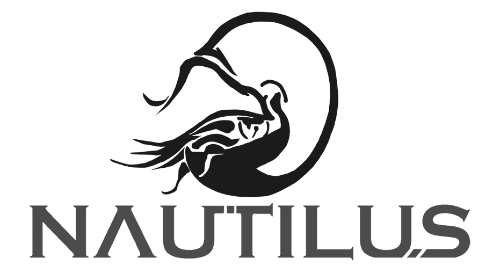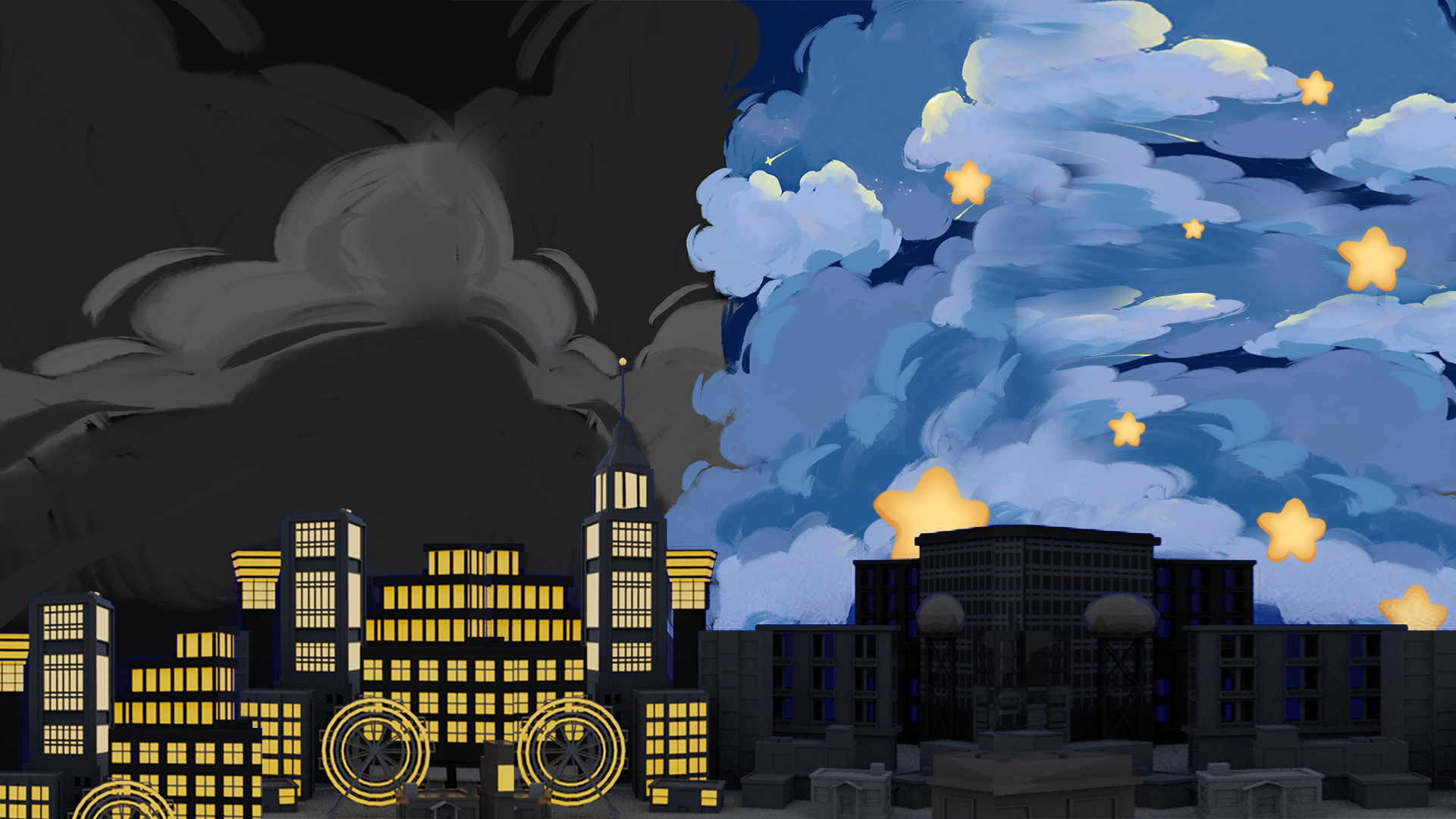- Introduction and overview of the project
The Nautilus’ team is working with Games for Change to create a transformational VR game that will be presented at the Games for Change festival in New York City. Our team has six members with Jessica as the producer, Targy and Harry as programmers and Kai, Anlan, and Jiaxin as artists. For this project, our team aimed to bring awareness to the harmful effects that light pollution has on birds, especially those that migrate at night.
To achieve that goal, the guest plays as a bird in a first-person view, experiencing the journey of migrating through Pittsburgh with their bird flock. The journey starts from Mount Washington, where the night sky is dark, filled with stars and the Milky Way. Soon, the bird flock will arrive in Pittsburgh and the city lights begin to appear and the stars will diminish. The light will then block the player’s vision and disrupt their migration path. To help convey the negative influence light pollution has on birds, the player will ultimately be trapped in a spotlight in downtown Pittsburgh and die. This is in reference to the harm that spotlights inflict on birds in real life. Scientists are still trying to find out why the birds can’t seem to leave a spotlight once they enter the light beam. Once they are in the spotlight the birds will then circle until they run out of energy and collapse and die.
Throughout this semester, we worked with subject matter experts to help us better understand light pollution and bird migration. Our first expert is Diane Turnshek, who was our light pollution expert. She is a professor at Carnegie Mellon, has been awarded the Dark Sky Defender Award and was instrumental in helping to get ordinances passed for the city of Pittsburgh. She taught us why the dark sky matters and the influence of different kinds of light. With her help, we designed the environment and game mechanism which is led by light. Our second expert is Jon Rice, who is the Urban Bird Conservation Coordinator at the Carnegie Museum of Natural History. He introduced us to the birds that can be found migrating through Pittsburgh and explained how bird migration is disrupted by light pollution. Our third expert is Nick Liadis who is the director of Bird Labs. He invited us to join his class where he teaches CMU architecture students about the dangers of window reflection and lighting and how it can lead to bird collision deaths.
The information from our experts was extremely helpful in ensuring that we made an experience that addressed the issues correctly.
- What went well (or what went right)
Overall our experience feels complete. We delivered a game with rich content and on time because of our rational scoping. We had a clear vision on our limits and what we were capable of so we always set goals that we knew we could achieve. We evaluated all the features in the experience based on its technical difficulty and time-costs at the very beginning. For those features that we had experience with before, we could give rough time costs immediately. For some new features that we hadn’t done before, we ran some test demos to get a sense of the time costs. Since we had figured out all the potential technical difficulties at the early pre-production phase, we didn’t have to worry about time consuming tasks later.
We feel that the gameplay feels strong. We had a lot of discussions and iterations on the gameplay at an early stage. We ran many playtests and heard feedback from playtesters who came from different backgrounds. Our subject matter experts, faculty members, and friends who provided a variety of suggestions from different perspectives. We made sure to address the advice that would benefit our project more in terms of delivering our transformational goals.
Our programmers worked really hard to implement key features, especially the routing and control system for our game and tweaked those features to work according to our scope. Our artists worked hard to bring a “real” Pittsburgh city feel into game, making many great art assets, VFX, adjusting the lighting of the game scene and creating good intro and ending videos.Throughout the whole development process,we had great teamwork and passion for our project. We also communicated with each other frequently to exchange ideas and discuss feedback we received on our game. We all worked hard with the goal of getting the player immersed in our game.
- What could have been better (or what went wrong)
We felt like our team could work on being more confident in ourselves and our abilities. Sometimes we were overwhelmed by the feedback we received that made us doubt ourselves and our path. However, we were able to achieve success as long as we had faith in our choices while making sure to be selective in the feedback we received. Everyone had their own judgment and bias and what we found was that we needed to extract the useful feedback that benefited our transformational goals.
We were disappointed that we didn’t have enough time to include a second player into our game. We all thought that the second player would be helpful with our transformational goals by providing options and opportunities where the audience could help change the light fixtures from bad to good. However, the actual development time and several big changes to the bird flying experience exceeded our expectations, which made us eliminate the second player. Ultimately we believe this was a good choice because we thought that having a one player game that was a complete and polished experience was much better than a two player game that was not fully functional or a polished experience.
- Lessons learned and conclusion
When we first started this project we knew that we were creating a game that focused on transformation, but we really didn’t know how to go about making that happen. We were then introduced to the Transformational Framework, which helped us to break down the development process and determine our transformational goals. We learned how important it was to have a solid foundation that we could refer back to throughout our development and it kept us focused on what we were trying to accomplish. Oftentimes we would be drawn to implementing a feature just because it made the experience more fun, but we had to always ask ourselves if those ideas and features also supported our transformational goals. By continuing to question this, we were able to navigate the feedback we received from our playtests, stay within scope and produce an experience that we feel creates a transformational experience for our guests.
We have been invited to share our experience at the World Migratory Bird Day event at the Frick Park Environmental Center in May. We are really excited to be able to have this opportunity to increase awareness through our game and to be able to use this event to prepare for the Games for Change festival in July. The festival will be celebrating its 20th year anniversary and we are really excited to be part of the XR for Change Arcade with others who are focused on making change. Our subject matter experts have expressed interest in our game for educational purposes so we are hopeful that our game will have more opportunities to create change.


Comments are closed